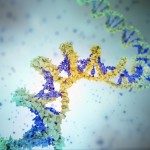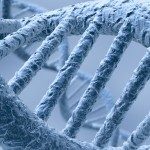Link to Pubmed [PMID] – 10390157
DNA Cell Biol. 1999 Jun;18(6):481-7
The PIP gene, localized in the 7q34 region that contains a number of fragile sites such as FRA 7H and FRA TI, codes for gp17/PIP, a protein secreted by breast apocrine tumors. We analyzed the integrity of this gene in 20 tumors of the urogenital tract. We found rearranged EcoRI fragments in 5 of 15 primary prostate carcinomas. No rearrangement was found in normal prostates derived from five patients undergoing prostatocystectomy during treatment of bladder cancers. By Southern blot hybridization with PIP gene exon-specific probes, the rearrangements were mapped at or near the 3′ end of the gene. These abnormalities were found, not only in the neoplastic cells invading the prostatic tissues, but also in seminal vesicles without histologic tumoral features. These data suggest a critical role of the PIP gene or neighboring genes in prostate cancer.


